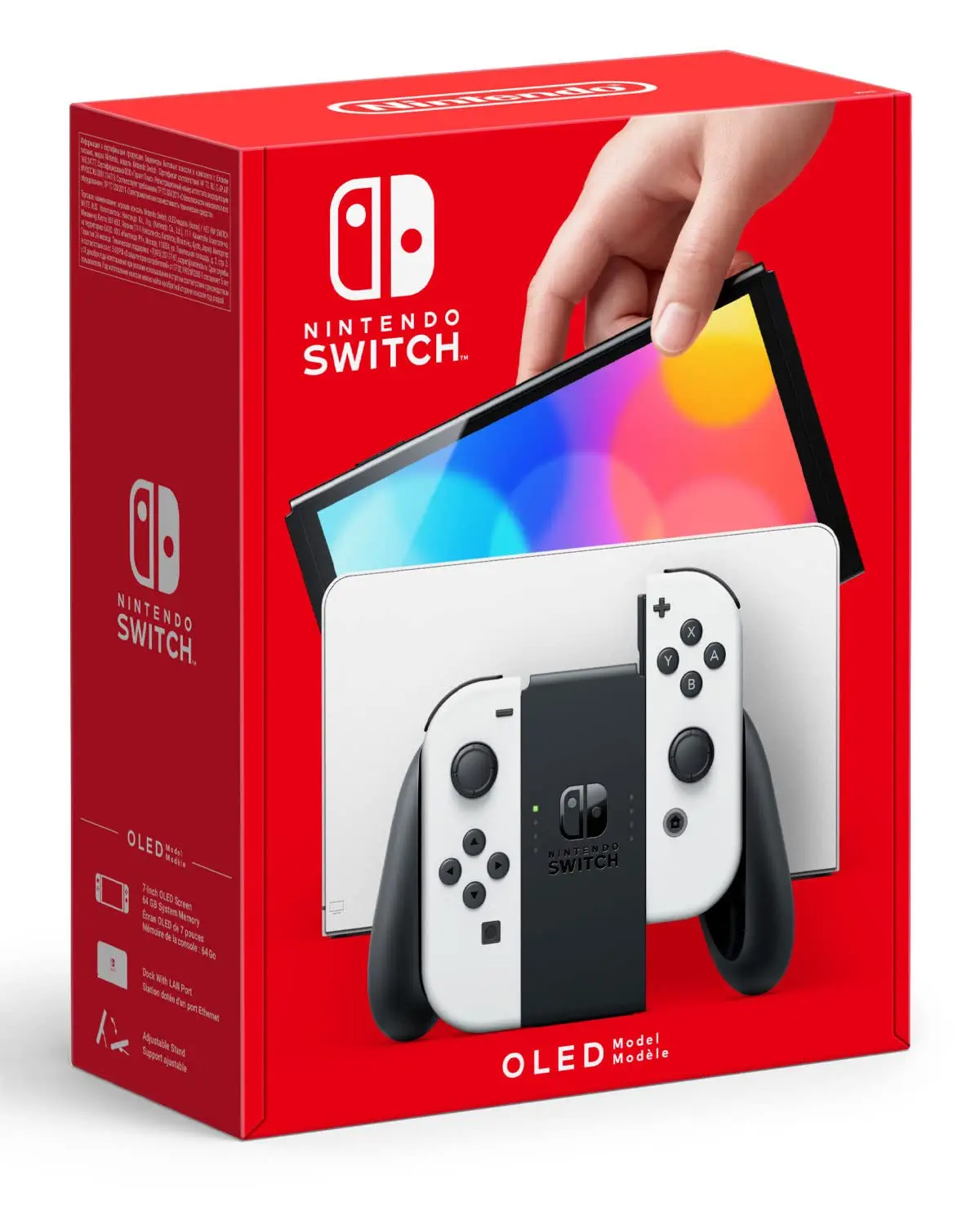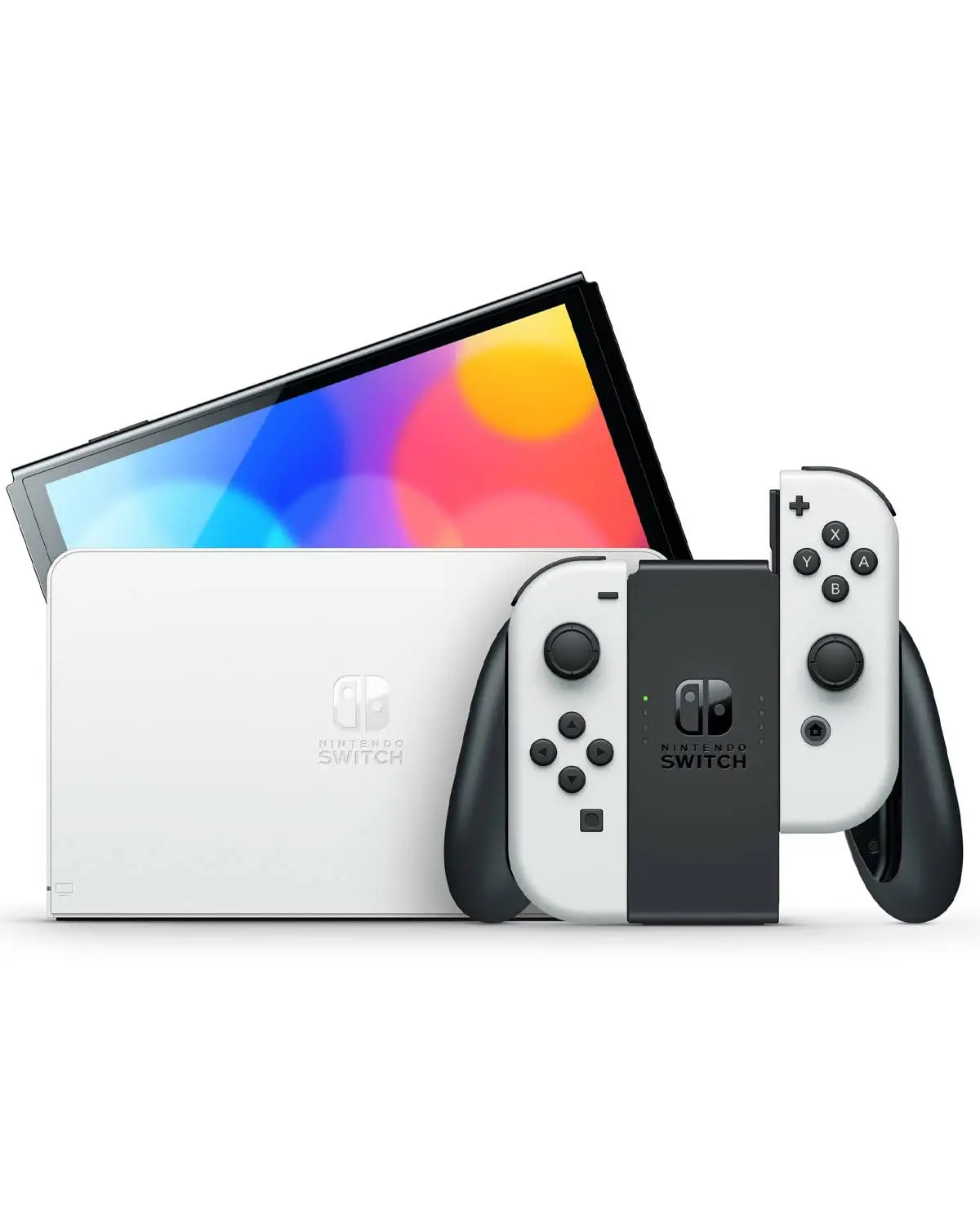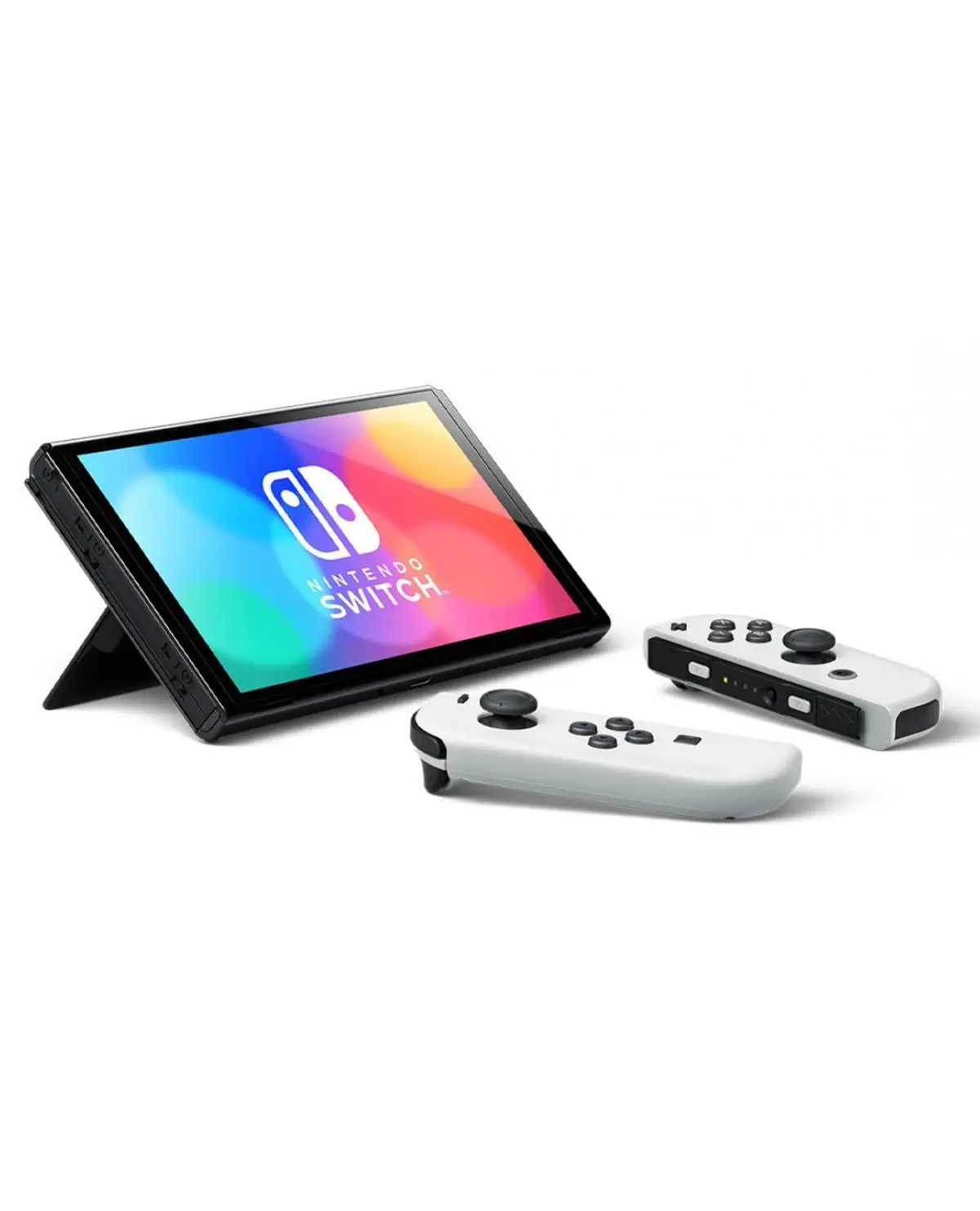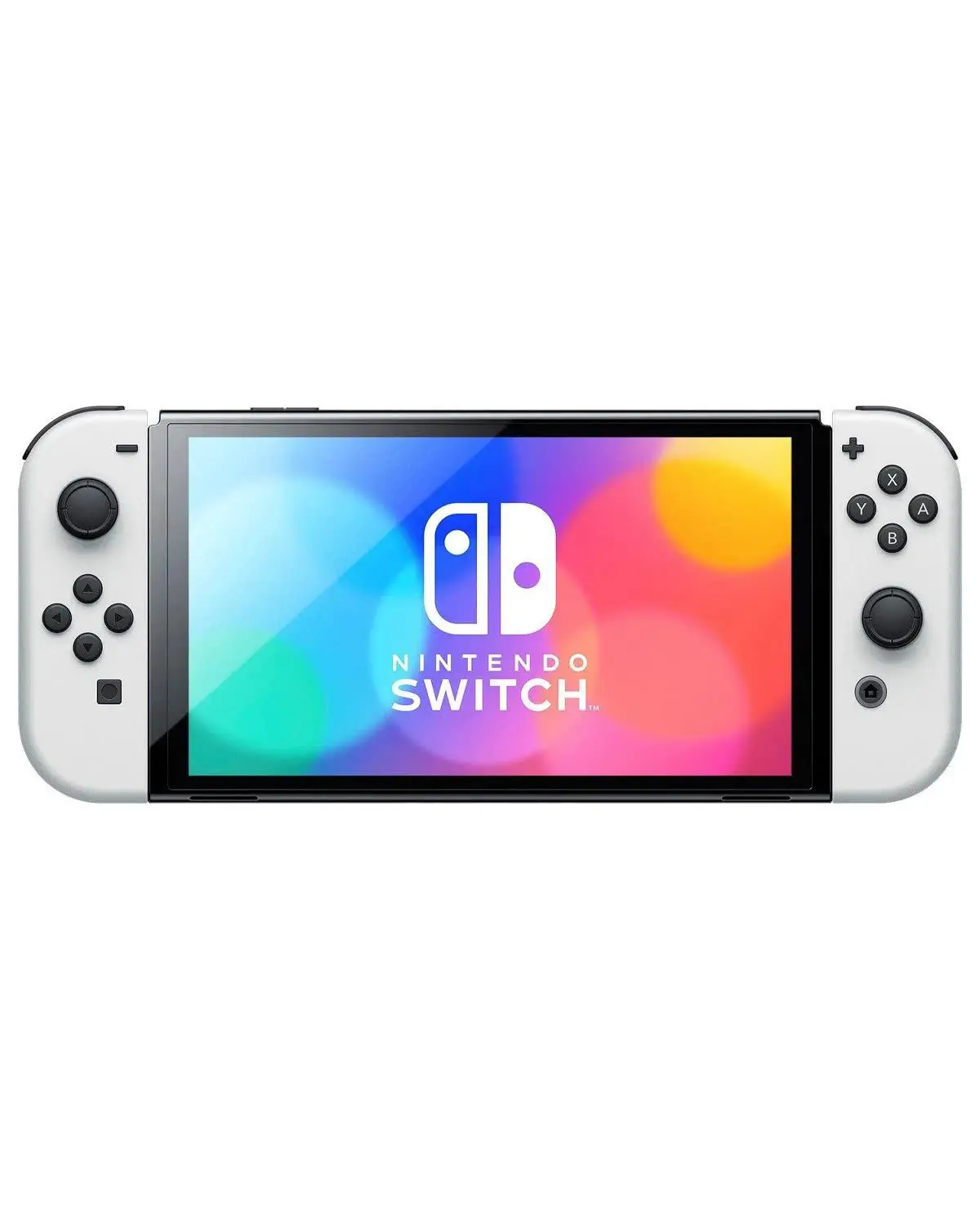The Number 1 Unbelievable Nintendo Switch OLED Model Is The Perfect Gift
Prices pulled from the Amazon Product Advertising API on:
Product prices and availability are accurate as of the date/time indicated and are subject to change. Any price and availability information displayed on [relevant Amazon Site(s), as applicable] at the time of purchase will apply to the purchase of this product.

- 7-inch OLED screen – Enjoy vivid colors and crisp contrast with a screen that makes colors pop
- Wired LAN port – Use the dock’s LAN port when playing in TV mode for a wired internet connection
- 64 GB internal storage – Save games to your system with 64 GB of internal storage
- Enhanced audio – Enjoy enhanced sound from the system’s onboard speakers when playing in Handheld and Tabletop modes.
- Wide adjustable stand – Freely angle the system’s wide, adjustable stand for comfortable viewing in Tabletop mode. Nintendo Switch – OLED Model supports all Joy-Con controllers and Nintendo Switch software
If you are a newcomer to the Switch, then the Nintendo Switch OLED is the model to get. It’s a mere $50 more than the original Switch, yet for $350 you get a notably improved display, as well as a few other quality-of-life tweaks, which promise to make for the best Switch gaming experience around.
The Switch OLED has the neat advantage of making the best Switch games look even better, thanks to its brighter and more vibrant display; if you have a modern Android smartphone or iPhone, take a glance at that, as it’ll have an OLED display and you can get a taste of what to expect from the Switch OLED.
There caveat here it that if you already own a standard Switch the upgrades on offer are probably not enough to buy the console again. It might be best to hold out for a a full 4K variant, which may or may not be in the works.

First things first: The Nintendo Switch OLED is, for the most part, exactly like the console’s base model. If you want to know how the system functions overall, I recommend you check out our Nintendo Switch review, which covers the system’s general size and shape, portable functionality, idiosyncratic controllers, uneven online features and extensive game library.
The first thing I noticed about the Switch OLED was that it’s the same size as the base Switch: 9.5 x 4.0 x 0.6 inches. This is a bit bigger than the handheld-only Nintendo Switch Lite, but it’s a comfortable size for most teens and adults to hold for long periods of time. (It’s probably a bit too big for small children.) This may seem like a minor point, but because the Switch OLED retains its counterpart’s physical design, all of your existing accessories should still work. Stashing the Switch OLED in my regular Switch carrying case saved me a big headache right off the bat. To be fair, the Switch OLED is a tiny bit heavier than the base model: 14.9 ounces, as opposed to 14.1 ounces. I didn’t find the OLED less comfortable to hold for long periods of time, but when it comes to handhelds, lighter is better.
OLED screen
From a physical standpoint, the Switch OLED makes two big deviations from the base model, and one small-but-significant deviation. The most noticeable change, of course, is the 7-inch OLED screen, compared to the 6-inch LCD screen on the base Switch.
The OLED screen is the centerpiece of the Switch OLED, and where most of Nintendo’s praise is due. The larger screen renders crisp images with vibrant colors and deep blacks. When you play a game with dark, detailed levels — such as the alien caverns of Metroid Dread or the foreboding castles of The Legend of Zelda: Breath of the Wild — the experience feels even more immersive than before. While the image quality isn’t vastly different between a 7-inch OLED and a 6-inch LCD, the color richness is.
At the same time, it’s worth pointing out that your eyes get acclimated to just about anything after a while. When I first jumped from the base Switch to the OLED model, I found the bigger screen and more lifelike colors stunning. After half an hour, I’d tuned them out to focus exclusively on gameplay. Likewise, going back to the base Switch felt like a big step down at first, and a non issue shortly thereafter.
For this reason, among others, I’d caution existing Switch owners against running out to buy the OLED model. It looks good, but it’s not a night-and-day difference from what you already have. The screen still maxes out at 720p resolution; the console still chugs during demanding gameplay sections sometimes.
If you’re worried about the Nintendo Switch OLED suffering from display burn in, don’t be. A recent real-world test has found that it takes around 3600 hours of continual use for the console starts to showing even faint signs of ghosting.

If there’s one area where the Switch OLED falls a bit short, it’s in performance. That’s not because the Switch OLED is any worse than the base model; in fact, it’s almost exactly the same. But the fact is that the Switch is a four-year-old console, and the industry has made some pretty significant strides in hardware since 2017. To put it bluntly, after playing the PS5 and Xbox Series X, it’s difficult to go back to a Switch, OLED or otherwise.
Like the base Switch, the Switch OLED features a custom Nvidia Tegra X1 chipset. This is similar to what’s inside a high-end streaming device; the Nvidia Shield uses one as well. The Switch OLED has 4 GB RAM and 64 GB flash storage. (The base model has 32 GB flash storage, so that’s improved, at least.) The result is a handheld hybrid that can display 720p at up to 60 frames per second in handheld mode, and 1080p at up to 60 fps in docked mode. 4K resolution and 120 fps frame rates are a pipe dream — not to mention the near-instantaneous loading times that SSDs can facilitate.
While Nintendo didn’t design the Switch to incorporate cutting-edge components, the device felt a little underpowered in 2017, and downright outmoded now. In handheld mode, you’ll notice long load times and low resolutions; in docked mode, you’ll notice dated graphics and inconsistent frame rates.
It’s also worth noting that if you own a base Switch and play primarily in docked mode, the Switch OLED has almost nothing to offer you. Once you plug the console into a dock, the OLED screen, larger kickstand and better speakers are meaningless. And if you need an Ethernet port, you can get a perfectly good adapter for $30.
The good news is that there is a way to get visuals from your Switch with an external accessory. We’ve tested the Marseille mClassic upscaler(opens in new tab) ($79 on Amazon) on games like Metroid Dread, and it does deliver cleaner, crisper graphics when using a larger 4K TV.


